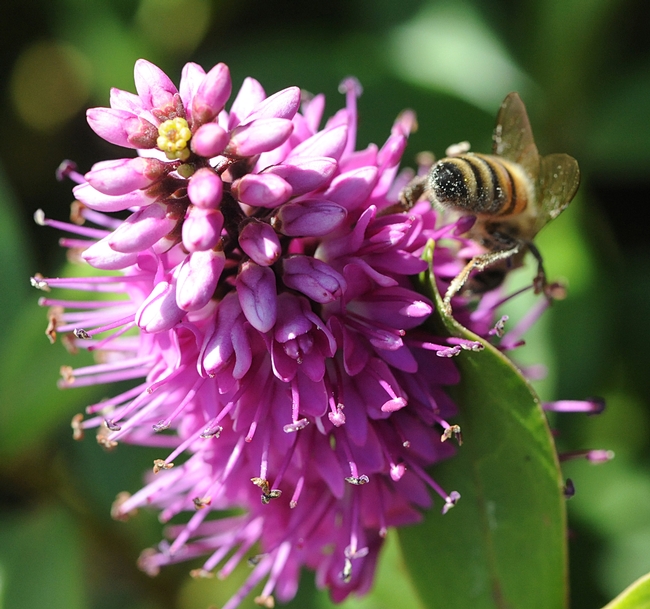A "she bee" on a hebe.
That has a nice ring to it.
It was Jan. 7, an unseasonably warm day for winter and we decided to take advantage of it by driving to the Loch Lomond Marina in San Rafael.
Gardeners do a good job tending the plants that border the marina and the honey bees do a good job of gathering nectar and pollen.
One of the plants popular among the bees is hebe (genus Hebe), an evergreen shrub that probably derives its name from Hebe, the goddess of youth (Greek mythology). A native of New Zealand, this plant is quite hardy, and some varieties bloom during the winter.
There's even a Hebe Society that promotes "the cultivation and conservation of hebes and other New Zealand native plants." Founded in 1985, it's a British registered charity. According to its website, the Hebe Society "is affiliated to the Royal Horticultural Society, New Zealand Alpine Garden Society and Tatton Garden Society. Most members are in the British Isles, but some are in the rest of Europe, North America and New Zealand."
Although the "she bees" (worker bees) forage on the hebe, the "he bees" (drones) eventually derive the benefits via the food brought back to the colony. So, the "she bees" and the "he bees" draw nourishment from the hebes.
That is, when the colony starts producing the "he bees."
Attached Images:

Honey bee foraging on hebe. (Photo by Kathy Keatley Garvey)

A "she bee" leaving the hebe. (Photo by Kathy Keatley Garvey)